TESSY automates the whole unit test cycle including regression testing for your embedded software in C/C++ on different target systems. As an easy-to-install and easy to operate testing tool TESSY guides you through the unit test workflow from the project setup through the test design and execution to the result analysis and reporting. TESSY takes additionally care of the complete test organization as well as the test management, including requirements, coverage measurement, and traceability.
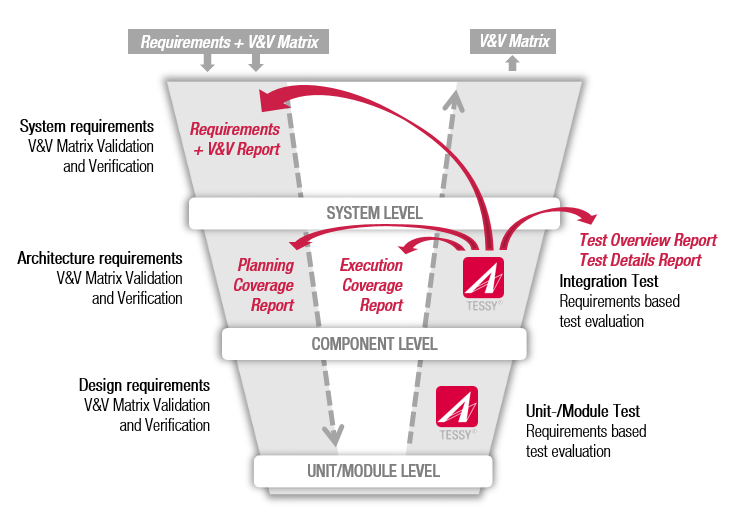
Manage your test project
The TESSY test project management feature provides the possibilty to define an individual test project structure based on collections and folders, to define environment variables, and to configure your desired compiler/debugger with the help of the integrated Test Environment Editor. The coverage results are displayed directly within the project structure and the test results are stored within test runs which allows keeping former (successful) results for reporting while continuing to work on test cases and test data.
Define, link and trace requirements
TESSY provides a basic management of requirements in a document structure. Furthermore it is possible to import Requirements from Requirement Management Tools, e.g. from DOORS and Polarion via ReqIF, CVS, and XML files. Requirement and validation results may also be exported into XML and ReqIF format. Reference mechanisms from test cases back to the requirements allow easy coverage analysis and reports as well as impact analysis of requirements changes. Tests (in detail modules, test objects and test cases) may be linked to requirements within a convenient requirements coverage view.
Design test cases within the Classification Tree Editor (CTE)
Design test cases using the Classification Tree Method (CTM) and apply the CTM within the graphical user interface of the Classification Tree Editor (CTE). Since the CTE is integrated in TESSY it is easy to set the values needed in the TESSY test process (e.g. input/output) directly within the CTE.
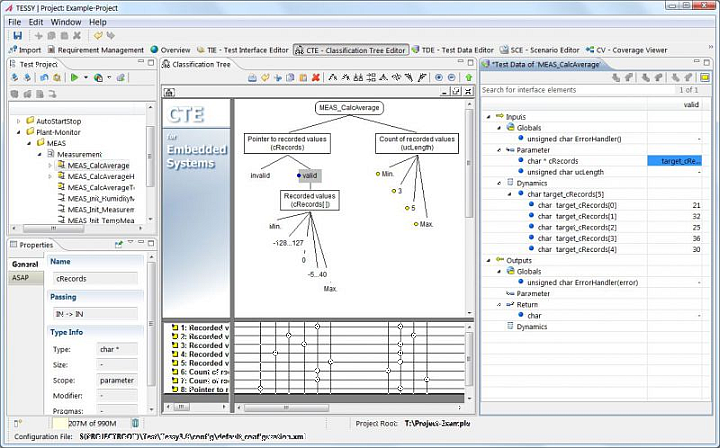
Edit test data within the tabular Test Data Editor (TDE)
With the help of the Test Data Editor (TDE) the editing of test data is simplified. Additionally the test data are visualized within plots.
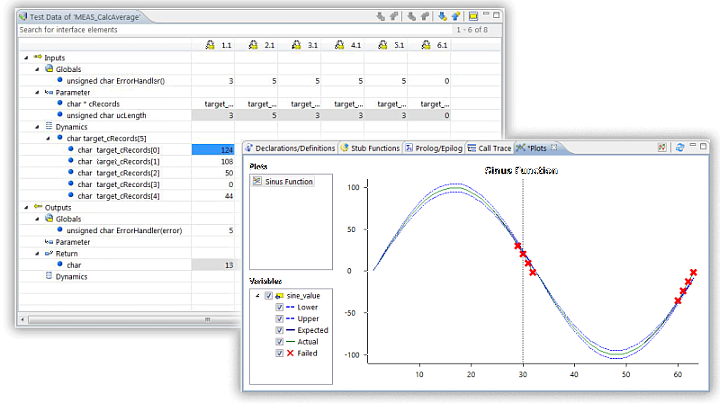
Add additional code
The Usercode editor is an integral part of the TDE perspective and provides flexible editing and outline views together with the tabular test data viewer, e.g. you have the possibility to read/write registers or add individual stub code.
Testing variants
With the fourth generation of TESSY it is now an easy task to test code variants. Hierarchical variant trees are created by derived modules. This allows an automatic testing of base and derived variants with selected test cases in a short period of time. For the tests, to indicate the relationship to a specific code variant, modules can be assigned to variants. Test cases within the derived variant modules can be added, deleted and individual test data values can be applied. Changes on the base variant can easily be synchronized down to the derived variant modules. The software variant management of TESSY V4.0 enables a product-specific code of a product series with different variations to be analyzed and tested individually in an efficient way.
TESSY Software Variant Management
Analyze the test results
Colored values within the TDE which correspond to the state of the test results, the visualization of test results within plots, and the Coverage Viewer (CV) with the function flow and details about the coverage help to analyze the test results.
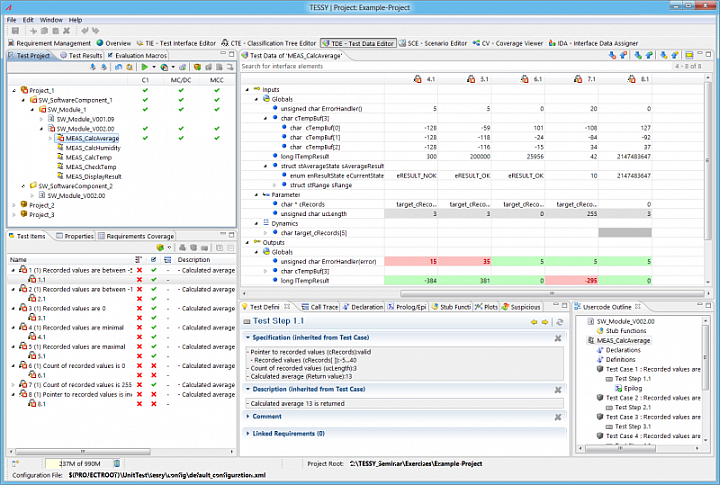
Analyzing Code Coverage
To determine what proportion of your project’s code is actually being tested by unit tests or integration tests, you can use the code coverage feature of TESSY. There are different kinds of coverage measurements which are provided in TESSY:
- Statement Coverage (C0)
- Branch Coverage (C1)
- Decision Coverage (DC)
- Modified Condition / Decision Coverage (MC/DC)
- Multiple Condition Coverage (MCC)
- Entry Point Coverage (EPC)
- Function Coverage (FC)
Code coverage can optionally be enabled when running tests, which causes TESSY to automatically instrument the source code for the selected coverage measurements. The Coverage Viewer shows the percentage of the code that was run in the test. In addition, the flow chart view and the colored source code view shows you graphically which code has been tested. To effectively prevent bugs, the tests should achieve the highest possible test coverage of the project code.
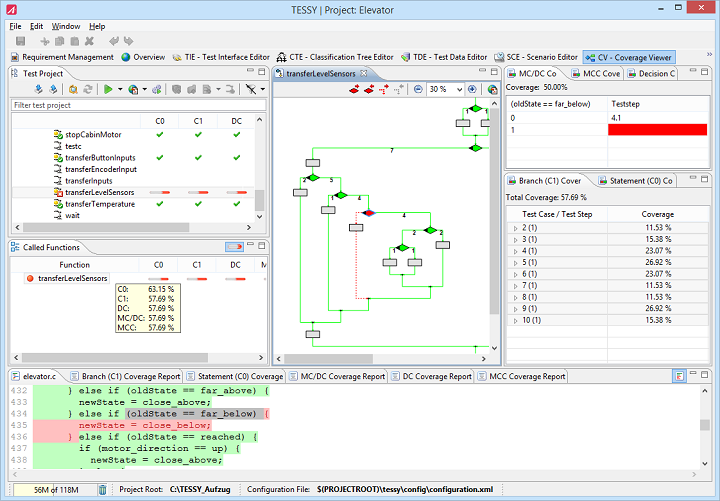
Test your components
Define scenarios in the Scenario Editor (SCE) and test components. All variables of the component interface may be set and checked at arbitrary points in time within the scenario.
Report the test plan and the test results
TESSY offers different types of automatically created and well-designed test reports in PDF. Report your requirements, the V&&V matrix, the test planning coverage (=planned requirement coverage), the test execution coverage, and the test overview and test details.
Voor meer informatie zien we u graag op onze stand 27.
 New COM Express Compact module
New COM Express Compact module Compact displays for quick...
Compact displays for quick... 180W ITE en medische voeding
180W ITE en medische voeding Goedkope openframe voeding
Goedkope openframe voeding